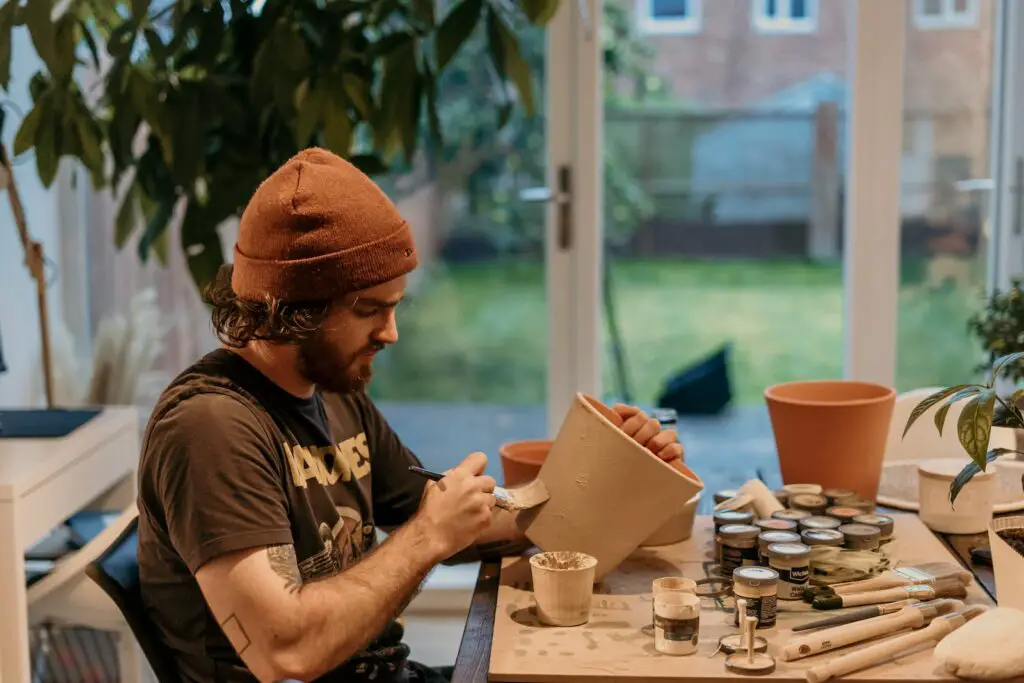Artist frequently uses modeling clay. A wide variety of clays are available, and it’s crucial to know which ones are safe for kids and which could be harmful to them or the environment.
Oil-based, water-based, and dough-based clays are generally safe for the environment and children to use.
Polymer clays have been linked to toxicity and could negatively affect ecosystems. In this post, we will acknowledge whether polymer clay is bad for the environment.
What is Polyvinyl Chloride?
Polyvinyl chloride is the third-most-produced synthetic plastic polymer worldwide. Around 40 million metric tons of this material are manufactured annually.
PVC is utilized for various purposes, including building supplies, medical tools, shrink-wrap packaging, and rubber toys like ducks. Unfortunately, until recently, many plastic toys marketed to children included PVC.
As one of the most dangerous plastics, PVC includes vinyl chloride, a proven carcinogen, and phthalates. It is notoriously challenging to dispose of or recycle PVC items.
As chlorine burns, it emits toxic fumes into the atmosphere. The material must be broken down into tiny pieces to recycle PVC, and then the additional toxins must be removed until the material is PVC-free.
Mechanical recycling describes processes like this. PVC could be recycled seven times, doubling its useful life to 140 years. Unfortunately, this technique works better with industrial versions of PVC than consumer forms that are less purified.
To make better use of PVC sustainably, Europe is currently in the vanguard. Recovinyl was founded in 2003 as an initiative by the European PVC sector to promote the sustainable development of PVC by improving production methods, reducing emissions, and increasing investment in cutting-edge recycling technologies.
Is Polymer Clay Bad For The Environment
Clay is a non-toxic, biodegradable material found in nature. Even though some clays may have trace quantities of lead, this is not hazardous to the ecosystem. However, most clays cause environmental harm during production.
Air pollution is produced during the firing process of the clay in industrial-sized kilns. People who live near the kilns may be at risk from these pollutants.
Disposal issues after using clays are also a cause for worry. Clay takes hundreds of years to decompose if thrown away. The following are the reasons why polymer clay is bad for the environment.
1. Bad Manufacturing Process
PVC, the primary component of polymer clay, is created in a process that consumes many resources and releases toxic fumes into the atmosphere. As a result, producing excessive polymer clay can have unfavorable results for the natural world.
Neverthelessmoreover, only a few producers of polymer clay also provide recycling services for their wares. However, PVC is a highly adaptable and long-lasting material that can be recycled repeatedly when incorporated into polymer clay.
While PVC production hurts the environment, polymer clay can be a sustainable crafts option with proper care and disposal.
2. Non-Biodegradable
Since polymer clay does not break down naturally, it will remain in landfills long if not handled appropriately. However, leftovers and waste polymer clay can be recycled into new goods with low environmental impact if disposed of appropriately.
A biodegradable material breaks down naturally over time. In other words, it indicates that the chemical can be broken down into harmless environmental substances.
Products used for a long time can be broken down into carbon dioxide, oxygen, & minerals when thrown away. As time passes, it will incorporate into the ground. Back there, you won’t find any poisonous material.
Once biodegradable materials are returned to the environment, they pose no threat to wildlife or ecosystems. The next obvious question is whether or not polymer clay can decompose.
3. Releasing Volatile Organic Compounds
When heated or otherwise processed, polymer clay can emit hazardous volatile organic chemicals. Utilizing polymer clay in a well-ventilated location is crucial because the off-gassing of chemicals might be harmful.
Polymer clay also contains a plasticizer. A lot of popular brands currently use citrate-based plasticizers.
Esters of citric acid are used to make this plasticizer. They are oil-based, tasteless, and odorless. In addition to being water- and biodegradable, they also have high miscibility and resistance to leaching. It’s completely safe for children’s playthings because it has no toxicity.
4. Health Problems
Polymer clay is malleable from a liquid plasticizer mixed with PVC powder during manufacturing. Some phthalate plasticizers are recognized endocrine disrupters linked to cancer, birth abnormalities, and other developmental issues; these tales will pop up in any search for the safety of polymer clay.
Thank goodness using these phthalates in polymer clay has been banned in European Union (1999). Health risks associated with polymer clay continue to be a concern, notwithstanding phthalate prohibition.
Like most things, it’s best to do as you’re told and apply your best judgment. Refrain from ingesting the clay, keep your oven spotless, use different tools for clay and meals, wash your hands afterward, and so forth.
Conclusion
It’s important to keep yourself safe and clean when engaging in any pastime by ensuring adequate ventilation, using protective gear (such as gloves or a mask), and washing your hands afterward.
That’s just good health and self-care on your part. It’s ridiculous to worry about “polymer clay contamination” while ignoring the outgassing from countless other plastics, industrial adhesives & petroleum products. You need to use some common sense.
Chemicals and random events can pose threats to our health and well-being. We take all reasonable measures to lessen the impact of potential dangers within our sphere of influence.
We’ve made the decision to live a healthier lifestyle by not smoking, eating only organic food, and staying away from genetically modified organisms. However, we use plastic-lined cars, breathe exhaust, and talk on cell phones while driving. There will always be a degree of danger.
Nonetheless, you must weigh the seriousness of each threat. As working with polymer clay does pose a very scary threat. We hope you must have acknowledged everything regarding is polymer clay bad for the environment.







